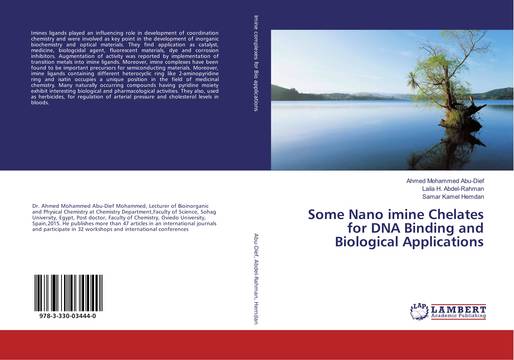Air and moisture stable coordination compounds of some first transition metals such as Cr (III), Fe (II), Co(II), Ni(II) and Cu(II) with newly designed tri and tetra-dentate imine ligands ( bsap, npap, bsisnph, npisnph) were synthesized. Tridentate imine ligands (bsap, npap) were synthesized by reacting 5-bromosalicyaldehyde (bs) or 2-hydroxy-1-napthaldehyde (np) with 2-aminopyridine (ap), whereas tetra-dentate imine ligands (bsisnph, npisnph) were prepared using isatin (is), 4-nitro-o-phenylenediamine (nph) with 5-bromosalicyaldehyde (bs) or 2-hydroxy-1-napthaldehyde (np). All the prepared imine ligands were analyzed by 1H NMR, 13C NMR spectra, elemental analysis, UV-Vis and IR spectra. The data
obtained from spectral investigation especially 1H and 13C NMR well confirmed the formation of azomethine nitrogen in the ligand structure. The structure of npap ligand was authenticated by single
crystal X-ray diffraction. Molecular structures of the prepared imine complexes were identified by several techniques including elemental analyses, IR, UV/ Vis, TGA, cyclic voltammetry, conductivity measurements and magnetic susceptibility. Thermogravimetric (TGA) analysis data was studied and indicated high stability for all the prepared complexes and suggested the presence of lattice and/or coordinated water molecules in the complexes. Coats–Redfern method has been used to calculate the
kinetic and thermodynamic parameters of the metal complexes. The redox behavior of the prepared npapCr, npapFe and npapCo complexes was investigated by electro-chemical method using cyclic voltammetry. The molar conductance of metal complexes in fresh solutions of DMF lies in the range 2.07- 7.42 Ω-1 cm2 mol-1, indicating their non-electrolytic behaviour. Moreover, the stoichiometry and the stability constant of the prepared complexes have been determined spectrophotometrically. The pH profile revealed that the wide range of pH stability of the investigated complexes is at pH = 4- 11 in most of them. In addition to, the particle size of the prepared complexes was determined by TEM. Density Functional Theory (DFT) calculations at the B3LYP/6-311G (d, p) level of theory have been carried out to explain the equilibrium geometry of the bsisnph and npisnph ligands. The optimized geometry parameters of the complexes were evaluated using LANL2DZ basis set. The total energy of HOMO and LUMO,Mullikan atomic charges, dipole moment and orientation have been performed and discussed. Based on electronic spectra and magnetic susceptibilities results, octahedral geometry is proposed for all
complexes except bsapNi npapCo and npapNi complexes. Transmission electron microscopy (TEM) showed nano-sized structures for all complexes with average particle sizes of 3- 250 nm. The synthesized imine ligands and their metal complexes were screened for anti-microbial activity by agar well diffusion
method against two Gram-positive bacteria (Staphylococcus aureus), two Gram-negative (Escherichia coli, pseudomonas aeruginosa) and three fungi strains (Aspergillus flavus, Candida albicans and Trichophyton rubrum), revealing that the complexes are good anti-pathogenic agents than the ligands. DNA-binding properties of the prepared imine complexes were explored by electronic absorption, viscosity measurements and gel electrophoresis. The experimental evidences indicated that the imine complexes could strongly bind to CT-DNA via an intercalation mechanism. In addition to the in vitro cytotoxic and antiviral activities of complexes were checked against a panel of DNA (HSV) and RNA (TMV) viruses. Moreover, investigation of antioxidant activities of newly synthesized compounds was done by ABTS assay. Among the compounds tested, npapFe complex showed the strongest potent radical scavenging activity with percent of 58.60 %.



